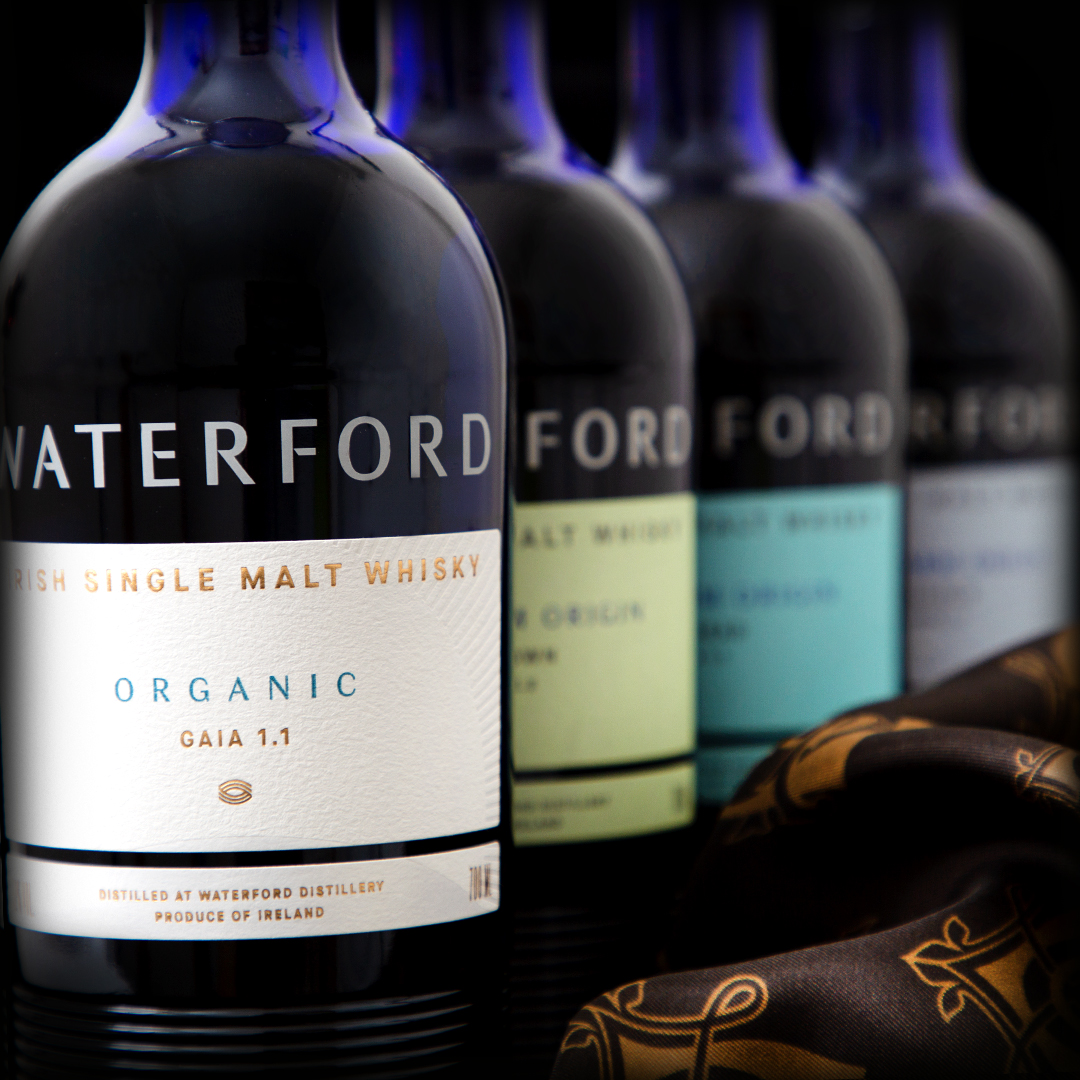Waterford Whisky
Natural whiskies that explore the Irish terroir.
Behind the ambitious Waterford project, there is above all one man: Mark Reynier. Founder of the Murray McDavid bottling company and at the origin of the revival of the Bruichladdich distillery, after having worked in wine, the man has a real obsession for the terroir.
After "twenty years in wine, then twenty years in whisky" he sums up, the Waterford project was born with the ultimate goal of creating the most unique, complex and profound whisky in the world.
Influenced by the world's greatest winemakers, he decided to apply the same intellectual drive, methodology and rigour to single malt whisky. So, after selling the Bruichladdich distillery to the Rémy-Cointreau group in 2012, Mark Reynier acquired a brewery on the south east coast of Ireland. The brewery, built in the mid-18th century, was owned by the Diageo Company, which was then expanded and modernised, with state-of-the-art technology to produce the famous Guinness. Mark Reynier bought two stills, second-hand from the Inverleven distillery, and connected them to these oversized installations. The Waterford project then became a reality.
The region where the Waterford distillery is located, sunny and warmed by the Gulf Stream, offers a fertile soil, particularly suitable for barley growing. Barley is the source of the whisky's complex flavours, which justifies Mark Reynier's approach, which focuses on the place and the way in which the barley is grown. His ambition is to truly place barley at the center of whisky, to extract its taste and terroir.
He believes that each terroir is a new starting point for Waterford. So, bucking the new trends in the whisky industry, focused on wood, casks, maturation and finish, Mark Reynier is interested in the beginning, the land, the grain, the farm and the farmer.
In his quest for flavours, shaped by all that ultimately constitutes terroir, Mark Reynier has succeeded in federating nearly one hundred small farmers ready to take up the challenge. As of 2015, there are over 97 Irish farms, some organic, some biodynamic, growing barley on 19 different soil types. Each has its own terroir, its own identity depending on their plots and the way they are grown.
The farmers often work alone, but Waterford involves them in the project. They are proud to taste the whisky made from the fruit of their labour. As a sign of recognition, Waterford puts the name of the farmer who grew the barley on every label.
This is part of an almost obsessive focus on traceability and recognition of terroir. Indeed, according to Mark Reynier, it is not the barley varieties that influence the flavours, but the soils and microclimates, as well as the way the barley is grown.
Once the soil has been worked, the freshly harvested barley is taken to the malting plant for the malting of the precious grain. Moreover, still in this traceability approach, each harvested parcel is stored separately, in small silos, then malted in batches of up to 100 tonnes of barley at a time before returning to the distillery as and when required.
Thanks to this level of logistics, each batch of grain has its own passport on arrival at the distillery. This passport identifies the plot of land where the barley was grown, the soil type, the farmer and farm, the variety of barley and any movement since harvest. This passport is completed at each stage of production and ageing up to bottling. Thus, each cuvée has its own code, called the "Téireoir Code", which allows the consumer to obtain all this data.
This code is printed on each bottle of Waterford whisky. Once entered on the Maison's website, it reveals a multitude of new and attractive contents linked to the bottle. With rich photography and an unparalleled logistical system, fans can browse maps, get harvest information, meet the producer, view distillation details and see the full range of woods used in the blend. This information is designed to delight the most curious whisky lover, but also to educate them about the concept of provenance. It is even possible to listen to the sounds coming from the farm itself.
Although each vintage of Waterford whisky has its own identity, they are all contained in the same bottle, the Maison's true signature. Inspired by old apothecary and medicinal bottles, this very unusual bottle is produced in a small town in Yorkshire, England, an unlikely place where there are several large glass bottle manufacturing sites. Recognisable at first glance, it comes in a magnificent "Waterford blue" which protects the whisky from the light and thus does not alter the meticulous work undertaken up to that point.
The Waterford range is now divided into three families: Single Farm Origin, Arcadian Series and Cuvées.
The first, using 100% Irish barley, widely regarded as the best in the world, is a range of natural, limited edition whiskies that explore the Irish terroir, one farm, one place, at a time. They are expressions of precision and rarity, highlighting the flavours of barley from individual Irish farms and harvests.
The second, The Arcadian Series, is made up of whiskies produced in collaboration with maverick farmers, inspired growers, iconoclasts whose ethos and way of life respect the land and ancient methods in the pursuit of pure flavours rather than the imperatives of yield.
And finally, the "Cuvées" series offers whiskies made by blending several cuvées, each from different farms. Blended layer by layer, each cuvée's personality contributes to an immense complexity. Each Waterford "Cuvées" is a micro-cuvee and offers a playful taste experience for the connoisseur.
Whichever bottle of Waterford whisky you choose, it will capture a piece of the terroir of the South East coast of Ireland and its subtle character shaped by microclimate, soil and people.
WATERFORD - different cuvées and vintages available.


